About Charaka
Charaka Mahila Vividdodesha Kaigarika Sahakari SanghaCHARAKA: The Road to Economic Independence
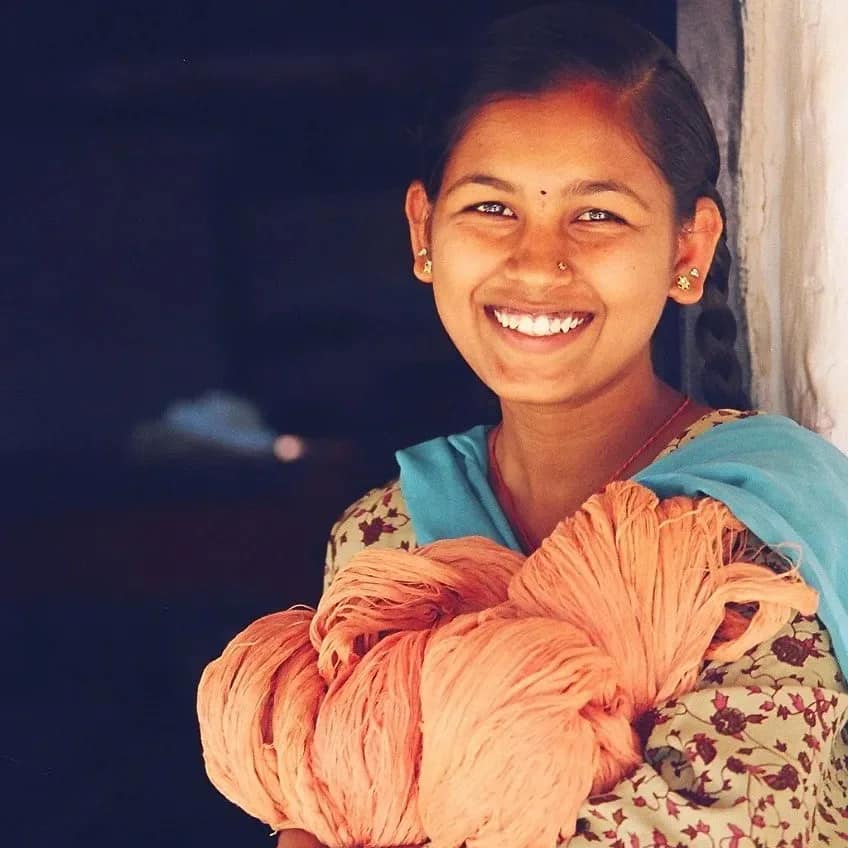
Where does Charaka’s story begin?
The Charaka project was started in 1994 by Prasanna, a well-known activist and theatre personality, with the idea of providing employment to a large number of weavers, and offering simple and affordable handloom sarees, fabrics and clothing to a wider customer base, with the conviction that handloom products should be accessible to all. The project questions the myth that handloom textiles are expensive and are best suited for elite urban markets. Often these textiles are expensive because of multiple overheads added to the product before it reaches the customer through high-fashion boutiques in urban centres.
Prasanna had a dream of setting up an environment-friendly industry to provide employment to the villagers, mostly women, in the heart of the Malnad region, Charaka was formalised as an all-women’s multipurpose industrial cooperative society at Bhimanakone village on the Western Ghats of southern India. The project was started with just 13 women and a couple of sewing machines in a small shelter on the Heggodu-Varadamoola road and today this intervention has grown into a large village industry with a workforce of 800 artisans across eight districts of Karnataka.
An environmentally friendly village industry
The Charaka Women’s Collective is a self-sustaining and self-sufficient cooperative. Once the raw yarn is purchased, all other processes are accomplished in-house. The weaving related activities at Charaka are not rooted in tradition or caste, but these skills are taught to anyone willing to learn. Today, there are more than 300 women who oversee each and every step of the management of handloom production, from the procurement of yarn, dyeing, reeling, weaving, printing, embroidery, tailoring, inventory and quality control of marketing. Each woman employed at Charaka takes home an average of Rs 3000 a month. The value of this money that a woman earns with dignity, clean technology and fresh air is much higher when compared to what her counterpart in the city earns at an export-oriented garment factory. The women are all members of the collective and they pay themselves based on their performance and the profits made by the collective. They also enjoy other benefits such as creche facilities for toddlers, subsidised food, health insurance and an annual bonus.
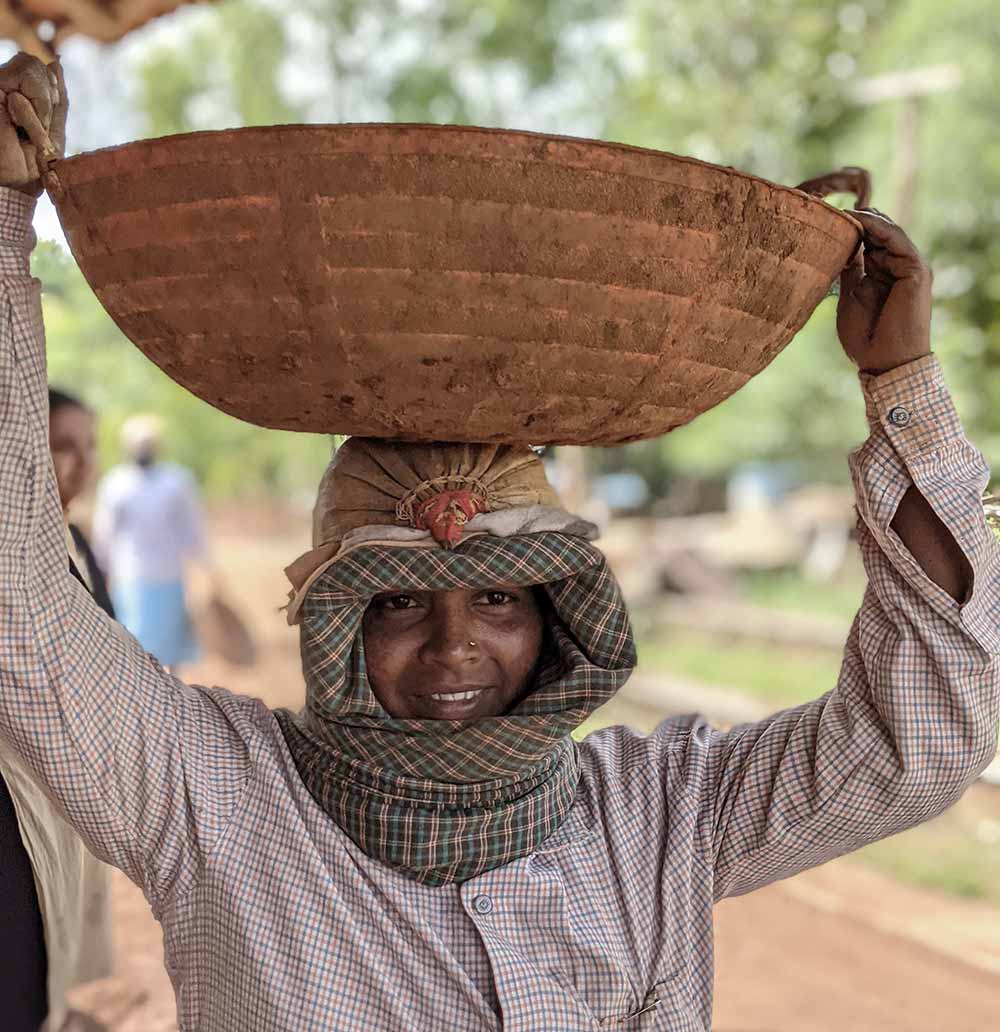
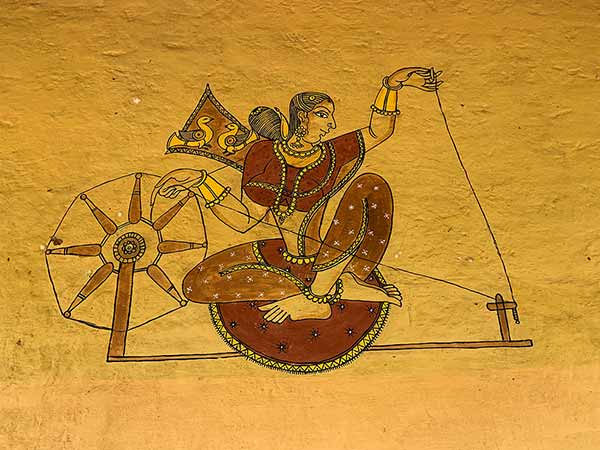
They produce a large variety of eco-friendly cotton handloom fabrics using only natural dyes. The warp is in twisted yarn, which is easier to handle, while the weft is in singles yarn, and this allows the fabrics to drape well and absorb dyes evenly. The fabrics are dyed at their centre, using mostly locally sourced ingredients such as areca nut, eucalyptus, majistha (madder) roots, pomegranate peel and kasimkari (iron rust). Fabrics are offered in kora (unbleached white) and shades of natural indigo, pinks, browns, olives, mustards, greys and blacks in plain cross-coloured dhup chav, and in elegant stripes and checks. They offer a limited colour range and have mastered the technique of creating colour-fast dyes in seven or eight colours. Their clothes are in basic silhouettes, well finished, consistent in quality and wearable.
An integrated production process
At Charaka, they believe in building on traditional techniques and wisdom, using modern expertise and technology to improve production processes when required. The project hopes to become a model that can be replicated to help reverse the migration of both men and money from villages to cities. Prasanna believes that Charaka must be a self-sustaining enterprise, which benefits all stakeholders. ‘The village sells its labour and does not get a remunerative return, which it did when there was the system of barter. Money flows out of the village and not into it. This process has to be reversed,’ he says.
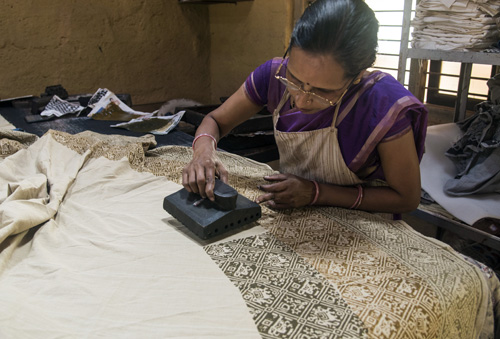
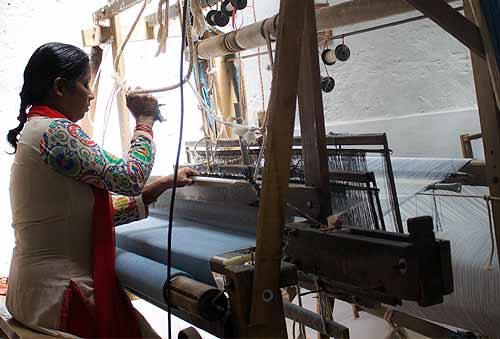
The women of Charaka
The women working at Charaka seemed a cheerful lot, and they talked of the pleasure of working in a stress-free environment where they felt a sense of belonging and respect. They come in by 9:30 am and work till 5 pm. A simple, hot lunch is served to all, which in itself is special for the women as they have been serving others all their lives. They come from humble backgrounds, and apart from working as labourers at the areca farms, they were expected to do all the household work, cook for the family, clean the house and look after the children and the elderly. They have no previous experience of others doing something for them.
With women being the decision makers at Charaka, they understand the needs and concerns of the women who work there, and try to offer solutions such as organising childcare centres for young babies, and maternity leave. What is most interesting is that there is no hierarchy within the organisation, and Gowramma, the president of Charaka, is one among them and continues to work along with them, and is often seen winding bobbins in her free time. The women have developed a strong bond with the organisation and they have become a source of support for one another.
With sustained work and better wages, women who earlier did seasonal manual work at the areca nut farms for low wages, feel empowered.
Charaka has transformed their lives and the additional income has improved their family’s standard of living. These village women from impoverished backgrounds have turned into smartly dressed, self-assured women, and most dress in handloom sarees or salwar kurtas that they themselves produce at Charaka as they can now afford to buy what they make. Each woman we spoke with shared her amazing story of transformation. ‘Earning a sustained income has given us confidence and we have gained respect within our community. We take great pride in our enterprise, which has given us financial well-being and dignity, as well as an opportunity to form strong bonds of friendship with our co-workers,’ they said.
Above text is from CRAFTING A FUTURE: Stories of Indian Textiles and Sustainable Practices
by Archana Shah
